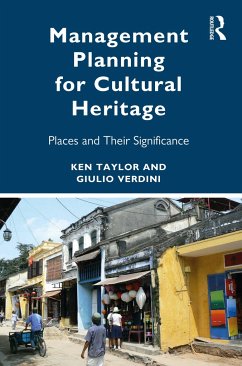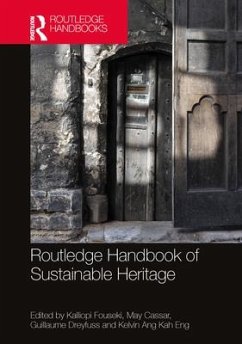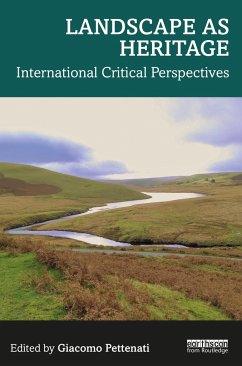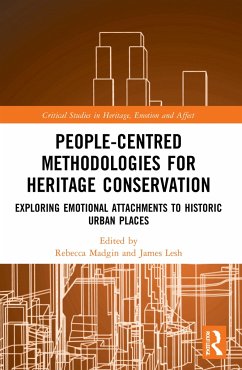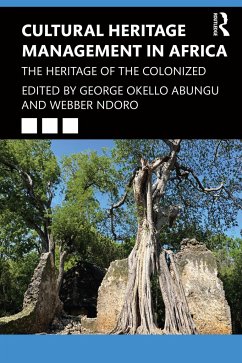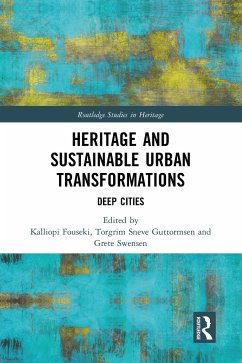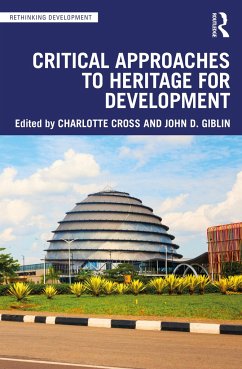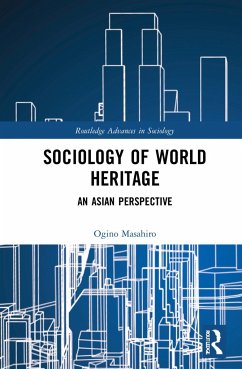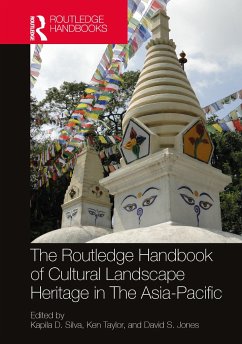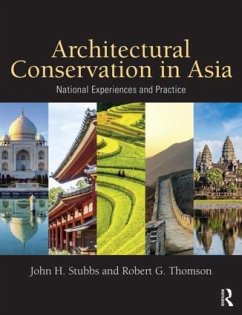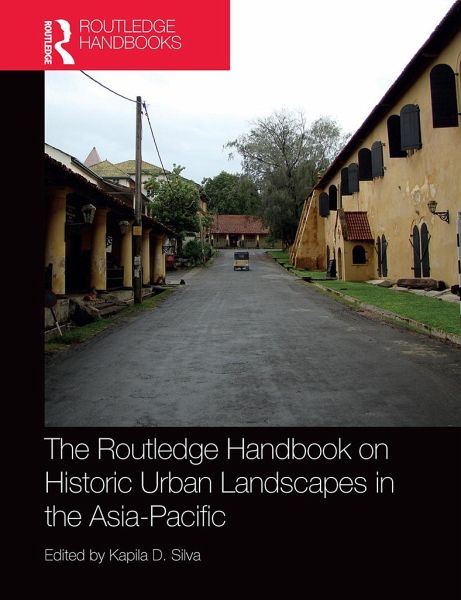
The Routledge Handbook on Historic Urban Landscapes in the Asia-Pacific
Versandkostenfrei!
Versandfertig in 6-10 Tagen
51,99 €
inkl. MwSt.

PAYBACK Punkte
26 °P sammeln!
The Routledge Handbook on Historic Urban Landscapes in the Asia-Pacific sheds light onto the balancing act of urban heritage management, focusing specifically on the Asia-Pacific regions in which this challenge is imminent and in need of effective solutions. Urban heritage, while being threatened amid myriad forces of global and ecological change, provides a vital social, cultural, and economic asset for regeneration and sustenance of liveability of inhabited urban areas worldwide.This six-part volume takes a critical look at the concept of Historic Urban Landscapes, the approach that UNESCO p...
The Routledge Handbook on Historic Urban Landscapes in the Asia-Pacific sheds light onto the balancing act of urban heritage management, focusing specifically on the Asia-Pacific regions in which this challenge is imminent and in need of effective solutions. Urban heritage, while being threatened amid myriad forces of global and ecological change, provides a vital social, cultural, and economic asset for regeneration and sustenance of liveability of inhabited urban areas worldwide.
This six-part volume takes a critical look at the concept of Historic Urban Landscapes, the approach that UNESCO promotes to achieve holistic management of urban heritage, through the lens of issues, prospects, and experiences of urban regeneration of the selected geo-cultural context. It further discusses the difficult task that heritage managers encounter in conceptualizing, mapping, curating, and sustaining the plurality, poetics, and politics of urban heritage of the regions in question. The connective thesis that weaves the chapters in this volume together reinforces for readers that the management of urban heritage considers cities as dynamic entities, palimpsests of historical memories, collages of social diversity, territories of contested identities, and sites for sustainable liveability. Throughout this edited collection, chapters argue for recognizing the totality of the eco-cultural urban fabric, embracing change, building social cohesion, and initiating strategic socio-economic progress in the conservation of Historic Urban Landscapes.
Containing thirty-seven contributions written by leading regional experts, and illustrated with over 200 black and white images and tables, this volume provides a much-needed resource on Historic Urban Landscapes for students, scholars, and researchers.
This six-part volume takes a critical look at the concept of Historic Urban Landscapes, the approach that UNESCO promotes to achieve holistic management of urban heritage, through the lens of issues, prospects, and experiences of urban regeneration of the selected geo-cultural context. It further discusses the difficult task that heritage managers encounter in conceptualizing, mapping, curating, and sustaining the plurality, poetics, and politics of urban heritage of the regions in question. The connective thesis that weaves the chapters in this volume together reinforces for readers that the management of urban heritage considers cities as dynamic entities, palimpsests of historical memories, collages of social diversity, territories of contested identities, and sites for sustainable liveability. Throughout this edited collection, chapters argue for recognizing the totality of the eco-cultural urban fabric, embracing change, building social cohesion, and initiating strategic socio-economic progress in the conservation of Historic Urban Landscapes.
Containing thirty-seven contributions written by leading regional experts, and illustrated with over 200 black and white images and tables, this volume provides a much-needed resource on Historic Urban Landscapes for students, scholars, and researchers.





